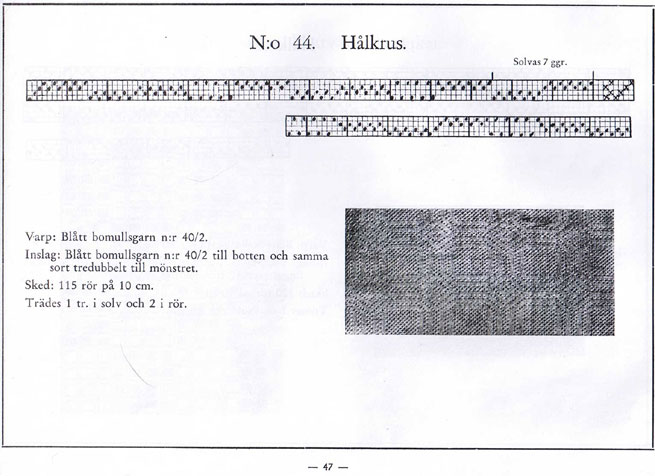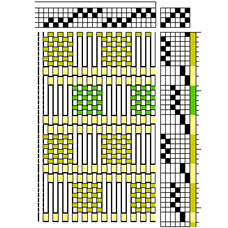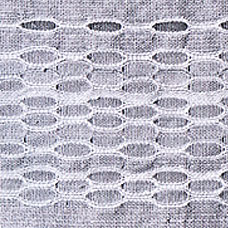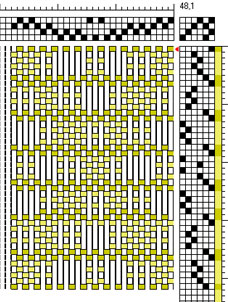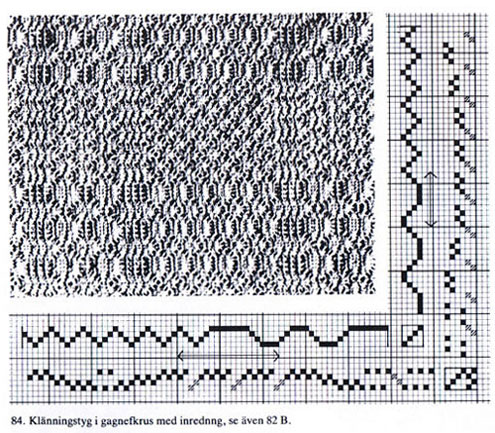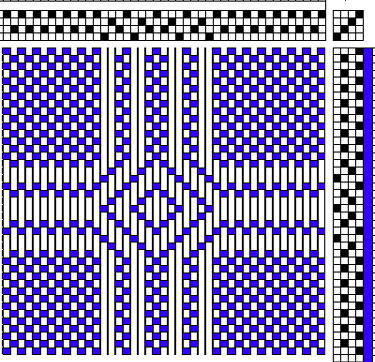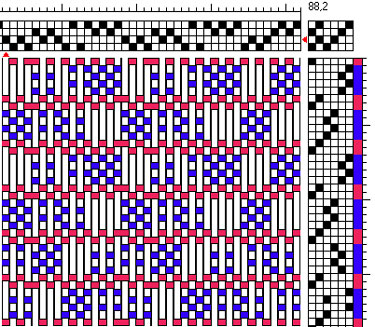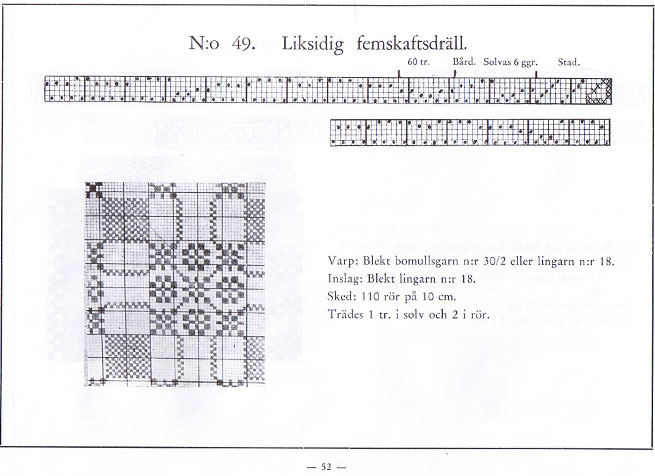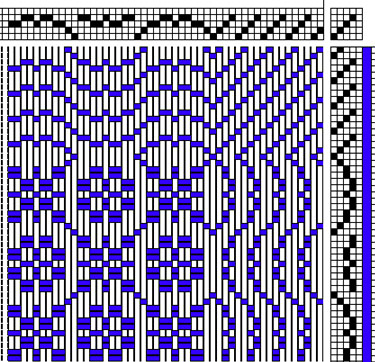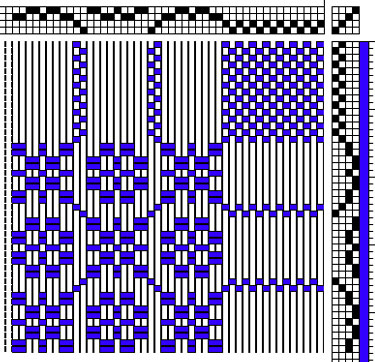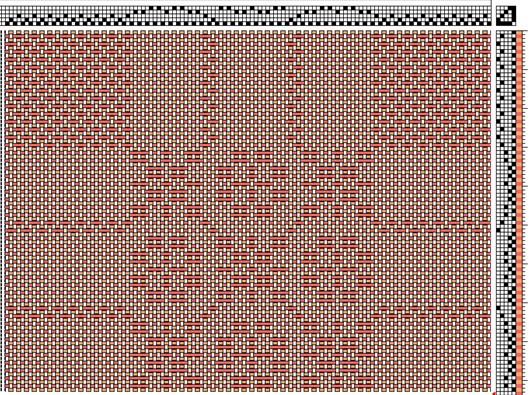Det är vanligt att man använder två olika grova inslag - grovt för de inslag som väver tuskaft över hela bredden,
tunnare för "hålen". Det grövre inslaget måste "bågas" - det måste finnas tillräckligt
för att det ska räcka till för att bilda de vågiga inslag som omsluter "hålen" (se bilden).
It is also important that the "holes" are not woven too high, or the outlining weft will (again)
have a problem with the curving.
For a time, this "simple" hålkrus was very popular to use for bed covers - so much that I have
seen it referred to as "bed cover weave".
The structure has long floats at the reverse side, which limits its useability.
When I instead went to Lundell, I found she regarded hålkrus somewhat differently -
she first mentions it together with monk's belt. She says hålkrus can be woven on any monk's belt threading
- you only change the tie-up.
It is also possible to make a more patterned variant, usually called (in Swedish) Gagnefkrus.
Cyrus gives a picture with a profile draft (right), and also offers a drawdown of a small portion.

